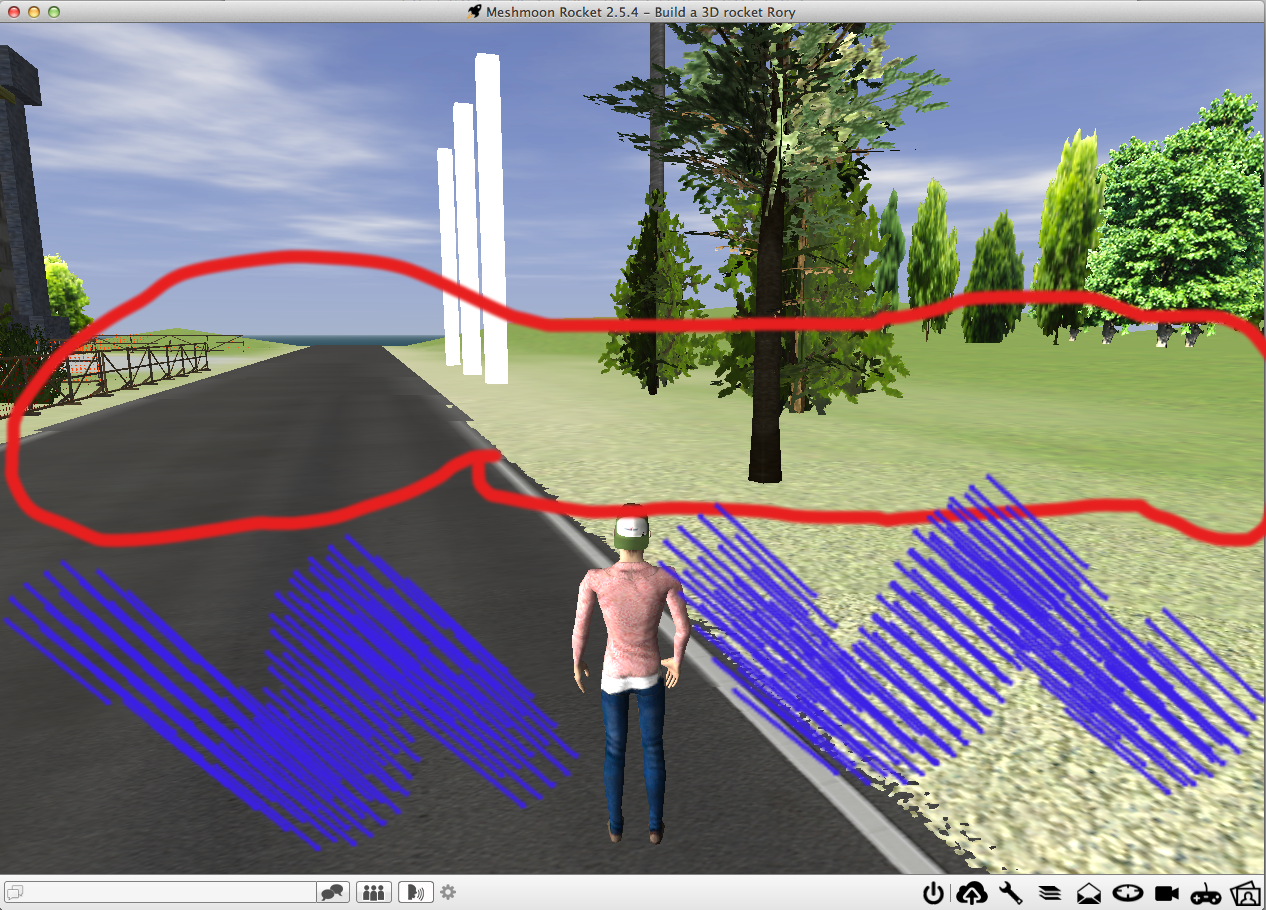Monocular Depth Cues
Size Difference:
Made in Meshmoon
This screenshot clearly shows an example of size difference used to trick our eye through monocular depth. Each of the white pillars has the same dimensions, yet the farthest away one is significantly smaller than the closest one leading us to recognize the depth of the image, its 3rd dimension. This is a textbook example of size difference and can also apply to many things inside and outside the physical realm.
Occlusion:
Found in Meshmoon
This screenshot shows a great example of occlusion. In it you can clearly seem by avatar occluding the truck with is occluding the backhoe. These occluding layers allow for us to get a sense of the 3D layers of the space as we can therefore tell that my avatar is in front of the truck which is in front of the backhoe. This type of monocular depth is quite easy to replicate via photoshop and gimp via its layers tool, albeit not as effectively as meshmoon does above.
Lighting and Shading:
Found in Second Life
This screenshot shows an exemplary example of the effect lighting and shading have on monocular depth. It can be clearly seen that the light thrown off of the campfire casts a gradated shadow around the sand, along the bench, and onto the cabin's wall. It all works together to create a form of depth around the entire scene as the fire's light shows us just how much depth the sand area around it has.
Texture Density:
Found in Meshmoon
This screenshot captures what Professor Walsh calls the texture density of Monocular Depth. What that means is, that the pattern applied to this wall that is circled above appears more dense in the far range of our vision. This sort of eye trickery is used to show how our eyes are unprecise and cannot focus in keenly on patterns far away so that with constantly repeating patterns, the farther away the part of it we look at, the greater density of the pattern we will see.
Linear Perspective:
Found in Meshmoon
This screenshot is a prime example of linear perspective in a 3D environment. The sides of the road, while the continue parralel to our line of vision and each other, seem to slowly be moving closer together towards the horizon. If we kept walking down the road it wouldn't actually get any slimmer but from a distance such technique is an excellent way to deploy Monocular Depth in a image or virtual world.
Atmospheric Perspective:
Found in Meshmoon
In this screenshot we see the use of atmospheric perspective. It the blue area everything is crisp and detailed, but as you get towards and into the red area it loses focus to where we have very little detail beyond the red area. This is known as atmospheric perspective and it occurs in the real world due to our 20/20 vision restrictions and because of how the atmosphere reflects light and makes objects at a distance harder for us to see. It is most obvious deployed above on the white lines of the road and how it suddenly becomes quite fuzzy in the red area.
This is the Final #2 demonstrating knowledge of the Six types of Monocular Depth. It is a final exercise from the Immersive Education course that I am taking at Boston College. The course is called Discovering Computer Graphics. For details, visit the immersive BC portal at http://ImmersiveEducation.org/@/bc






No comments:
Post a Comment